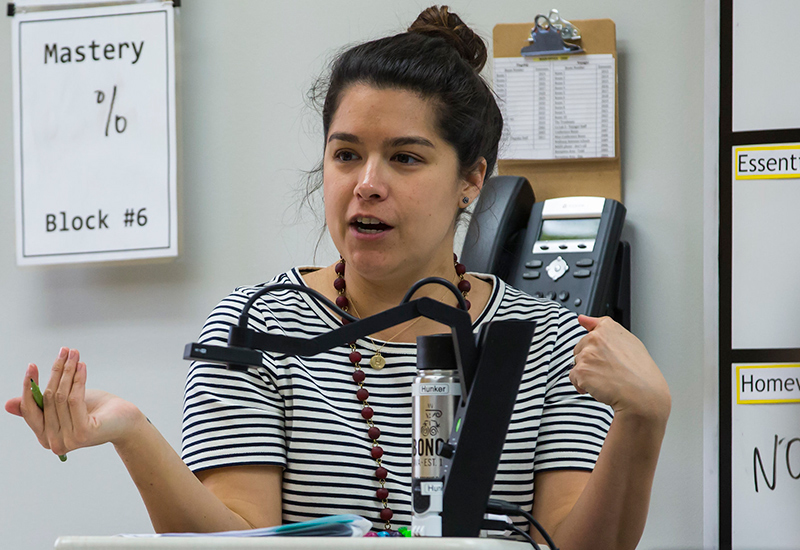Key Takeaways
- Because contexts vary so widely, it is hard to define what a “best practice” really is. Sharing how a practice evolved, and what it intended to accomplish, in addition to the practice itself, enables more rigorous adoption and adaption by others.
- The notion of a “best practice” can be calming and can also offer a safe entry-point to experimentation. If a teacher or a school leader is unsure of how to proceed, following a well-worn path can reduce anxiety. At the same time, it can also cause practitioners to overlook factors in their own context that the practice does not address or match. As a leader, one of the most important roles you can play is to provide enough support and cover for school leaders and teachers that they can genuinely experiment without constantly fearing failure.

Context
No system’s context is exactly the same as another’s, and therefore pathways to system change cannot completely replicate each other. While case studies on system-wide implementation offer inspiration and ideas, they can be difficult to apply in new contexts.
Regardless of context, however, all leaders interested in scaling new approaches face choices about how to lead system change in a way that maximizes benefits to students. In interviews across the country, we found that certain decisions kept surfacing as critical to success, many of which contained competing priorities - forces pulling in different directions. Rather than choose one priority and ignore the other, leaders explain, the key is to figure out how to manage both in a way that best fits your context.
Overview of the Challenge
Innovative instructional strategies emerge daily in classrooms across the country as teachers and students navigate learning together. Districts/CMOs not only have to find ways to support communication between teachers (in order for the practices to spread), but they can also influence what is shared. It is most common to share "what works" (the result of a trial-and-error process) in order to pass along ideas others might use. Because all contexts are different, however, sharing only the output of a process may not be that useful. Sharing the process itself (as well as failures along the way) offers a richer foundation to spread ideas, but can be cumbersome and inefficient.
Why Share Best Practices?
Sharing best practices has the benefit of being relatively efficient. It hands off successes for others to emulate, which may save them time and energy. It provides a sense of trust because people can see evidence of value in the endorsement by a peer. Finally, if done well, it can be implemented without the need for extensive context about its origin.
While sharing best practices and failures are not mutually exclusive, here are some examples that illustrate the benefits of sharing what has worked in past:
Here are a number of school-based examples of teachers sharing their work with their peers:
For educators who want to extend their practice, here are links to a set of resources that provide an in-depth exploration of various blended models:
Why Share Our Process (and Failures)?
It may seem overly complicated to share our process for testing ideas or too risky to share our failures. But this information is crucial for enabling others to engage in new practices. It communicates logic, not just outcomes, which provides others with a pathway to adapt practices to their own contexts. It also contributes to a general culture of openness and a learning orientation throughout the system.
What the Data Say
In a survey of 89 leaders from 60 systems across the country:
- For better or for worse, systems overwhelmingly lean toward sharing “best practices”; only 12% said they leaned towards sharing failures or their processes (and these were largely private schools and single-site entities)
- 81% of respondents reported that their system had dedicated time and resources to this challenge. This was the lowest rated question in terms of districts investing time and resources on the survey.
- Only 28% of respondents rated this as a “high priority” challenge
Want a deeper dive into the data? Explore our white paper, entitled Look Both Ways for more information.
Take It Further
To jumpstart your own discussions, consider these questions:
- To what extent do people in your system share their failures or the process they engaged in to reach a particular practice? If this is rare, why is it rare?
- What can you do as a leader to invite teachers and school leaders to share what doesn't work more regularly? What cover can you provide that is currently not there?
- To what extent does your own behavior model a philosophy of continuous learning? Are there ways that your own fear of failure might be getting in the way?